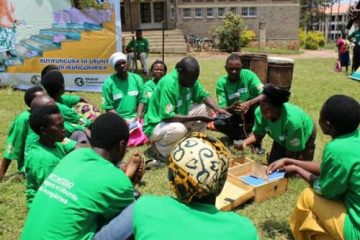At the heart of Ghana’s Upper East Region, where the cracked earth remembers the footsteps of chained ancestors, the haunting echoes of the transatlantic slave trade were revived, not by scholars or elders, but by schoolchildren. In a powerful act of remembrance and protest, pupils of Rovega Preparatory School staged a dramatization of the slave trade at the historic Pikworo Slave Camp in Paga, Nania, evoking both pain and purpose.
The reenactment, part of the annual PANAFEST/Emancipation Day celebrations, was more than a theatrical display, it was a striking call for reparative justice for the generations of Africans brutalized, uprooted, and psychologically wounded by slavery. Through raw emotion, vivid storytelling, and a mastery of historical detail, the children used their voices and bodies to demand what centuries of injustice have denied: recognition, repair, and reckoning.
Set against the backdrop of the Pikworo Slave Camp, a site established in 1704 as a holding ground for enslaved Africans, the performance traced the deception and betrayal that marked the slave trade. Pupils portrayed how African ancestors extended hospitality to foreigners, only to be tricked, captured, and sold into slavery. Characters like Daggaw from Mali and his counterparts Samori and Babatu from Burkina Faso were shown as enablers of colonial brutality, collaborating with Europeans to betray their own.
The performance did not flinch from difficult truths. It confronted the emotional and intergenerational scars still borne by African people, and it urged spectators, including chiefs, community leaders, diaspora returnees, and officials, to connect this painful past with present demands for justice and equality.
Speaking at the event, themed “Let us Speak of Reparative Justice – Pan African Artistic Activism”, Mr. Ekow Sampson, Deputy CEO of the Ghana Tourism Authority, praised the pupils’ courage and skill. “Let us all, Ghanaians, Africans, and people of African descent across the world, look forward to a future of truth and justice,” he said.
But this call for justice wasn’t just about the past, it was about owning the narrative. Prof. Pwakweah Atudiwe Atudipare Manchi III, Paramount Chief of the Manyoro Traditional Area, echoed this, urging Africans to take charge of their history: “We will not highlight these traces in order to forget our pain; we will highlight them to underscore our firm resolve never to lapse into such a low point in life.”
The cultural program also included traditional dance performances and exhibitions that honored the region’s resilience and artistic heritage. Yet beneath the celebration lay a sobering reminder: the legacy of slavery is not confined to memory, it continues in the form of poverty, inequality, and underdevelopment.
Regional Minister Donatus Atanga Akamugri called for a renewed commitment from governments and stakeholders to push for policies that address the root causes of such challenges. “Reparative justice must not only come from outside, but must also guide our internal efforts to heal, educate, and empower,” he said.
Highlighting the need to preserve and invest in historical sites like Pikworo, Mr. Wisdom Ahadzi, Regional Director of the GTA, urged the government to prioritize the site’s redevelopment. “This is not just a tourist site; it is sacred ground. It tells the story not just of Ghana, but of Africa’s endurance,” he said.
As the sun set over the slave camp, the children’s performance lingered in the air, not as a mere act, but as a message. That Africa remembers. That Africa still aches. And that Africa demands justice.








